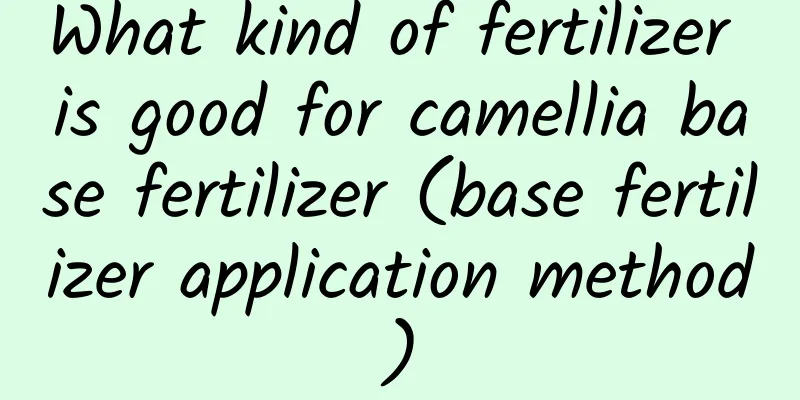Autumn is here. Nothing can water the flowers better than this. It makes everything flourish. Flowers bloom unstoppably.

|
The fertilizers that people often use to add nutrition to flowers generally include fermented rice water, fermented soybean water, and the common cake fertilizer and phosphorus, nitrogen and potassium compound fertilizer. These are fertilizers that can be applied according to the habits of the plants. Not only can they allow plants and flowers to thrive in autumn, a season suitable for growth, but they can also supplement the nutrients of the plants! Friends who have been growing flowers for a while must know about potassium dihydrogen phosphate, right? This kind of fertilizer is commonly used by plants. It can make flowering plants bloom more flowers, and the quality and quantity of flowers will also increase. Many people don’t know how to water flowers with potassium dihydrogen phosphate. Today, Huahua will tell you how to water flowers with potassium dihydrogen phosphate. First of all, we need to know what kind of plants like potassium dihydrogen phosphate as a fertilizer. Fertilization must also be in line with the preferences of the plants, otherwise the plants will easily die. Fortunately, potassium dihydrogen phosphate is a fertilizer suitable for most plants. So if you have common flowering plants at home and want them to bloom better and stronger, potassium dihydrogen phosphate is a good choice. Secondly, we need to know when to apply potassium dihydrogen phosphate. The concentration of potassium dihydrogen phosphate used in different situations is also different. Choosing the appropriate concentration can enable plants to absorb faster and grow better. Some friends grow flower plants, and flowers need to bloom! Fertilizing plants will only be effective if it is applied before they bloom. Therefore, it is best to spray 0.2%-0.3% potassium dihydrogen phosphate on the surface of the plant before flowering. Doing so can make the leaves of the plant grow stronger and provide better nutrients to the plant. For plants that want to bear fruit, you can also use the same concentration of potassium dihydrogen phosphate. Everyone should pay attention that when applying potassium dihydrogen phosphate to plants, the concentration should not exceed 1%. Although it can indeed make the plants grow healthily, don't be greedy. Fruit-bearing plants only need to be sprayed once every 10-15 days. I heard that it can also increase the number of fruits! After the fruits are picked, spray the same concentration of potassium dihydrogen phosphate every 10-15 days. This can replenish the nutrients lost during fruit picking, protect the leaves and prevent them from drying up. Generally speaking, fertilizers such as potassium dihydrogen phosphate need to be diluted before watering. We can add water according to the ratio of water to fertilizer of 1:500. Generally, watering is done on the leaves of the plants, and the effect can be seen in 3-5 days! I wonder if everyone knows how to call the potassium dihydrogen phosphate fertilizer that Huahua will talk about today? This kind of fertilizer is indeed a must-have for flower-growing experts! Come and try it too! |
Recommend
Cultivation methods and precautions of fleshy Buddha beads
The succulent Buddha beads are the easiest to gro...
Cultivation methods and precautions for rose potted plants
1. Breeding methods 1. Soil: It is better to choo...
How to grow orchids and the price of orchids
1. How to grow orchids Soil selection: When plant...
If you just scatter these 4 kinds of flowers on the ground, they will quickly grow into a large flower carpet, and neighbors will rush to watch!
Throw the pennywort on the ground and it will gro...
How to breed spring feathers
Reproduction method Seed propagation Generally sp...
How to grow the self-sucking pot green radish more vigorously
Growing green radish in a self-watering pot can p...
What to do if camellia does not grow leaves
1. Supplement nutrients Reason: Camellia naturall...
The difference between small-leafed banyan and tiger-skinned banyan, are they the same plant?
1. The difference between small-leaf fig and tige...
How often should I water the anthurium?
Water every few days Anthurium is suitable for wa...
Nobel Prize in Physics awarded to climate scientist 2021 Physics Prize winner announced
At about 5:48 pm Beijing time on October 5, the 2...
How to breed Luanfengyu and what to pay attention to
How to breed Luanfengyu There are two ways to pro...
Why can't you grow jasmine at home?
1. Why can’t we plant Jasmine can actually be gro...
How to propagate Echinacea
Seeding method Sowing can be done in late April i...
How to water potted camellia and what soil is best
1. How to water The watering of camellia plants i...
Can coffee grounds be used to grow flowers?
1. Can I grow flowers? You can use coffee grounds...









